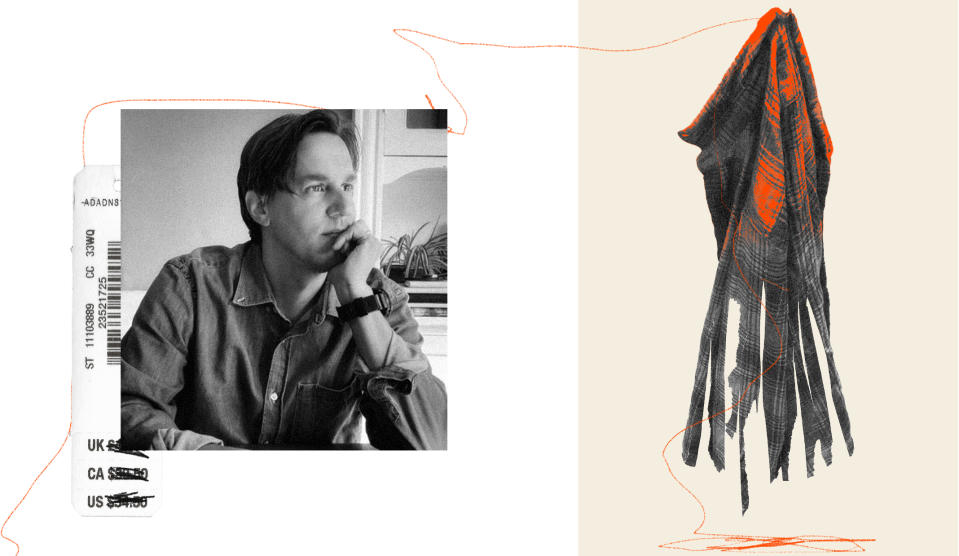The Last American Flannel

Steven Kurutz knows what it’s like to watch a place disappear. Renovo, Pennsylvania, the industrial town built around the Philadelphia & Erie Railroad, where he grew up, has spent the last six decades in bad decline. Between 1910 and 2010, its population decreased by 75%. People found work elsewhere and didn’t come back. That exodus is part of what drew him to the subject of his latest book, American Flannel. It’s a book about a kind of shirt popular once popular in Renovo and towns similar to Renovo where those shirts used to be made.
“Flannels are a very small-D democratic garment, worn by both the surfers in Malibu and the farmers in Maine,” Kurutz says of the flannel shirt. “We probably all have flannels in our closets. Our fathers and grandfathers wore them.”
Today's Top Deals
To understand the story of American flannel, it helps to define terms. Mall brands still stock “flannel” shirts, but they’re typically selling the pattern, not the material. Real flannel was developed in 17th century, in Wales. It’s a strong fabric made with carded or worsted wool yarn and “fluffed” on the service to create some softness. Production increased markedly during the Industrial Revolution when Hamilton Carhartt — that Carhartt — built a mill in Detroit at the end of the 19th century. Flannel became workwear and also ubiquitous.
Then, starting in the 1970s, upstart American brands went abroad in search of cheap labor. They found it in China and Bangladesh, countries with fewer labor and environmental regulations. They produced cheaper, lower-quality flannel shirts. Bigger brands followed and domestic factories closed. The public got used to synthetic materials and the demand for the skillsets necessary to create traditional flannel declined. Suddenly, no one was learning how to weave or “nap” (a process involving a machine that creates the fluffy, almost down-like texture of flannel). Made in America became not only a rarity but a near practical impossibility. The production facilities didn’t exist and the laborers had moved on.
“I’ve seen firsthand what’s happened in the heartland,” Kurutz says. “And I thought the journey of the flannel shirt was a good way to get at these larger questions: How much of our manufacturing sensibility was sent offshore and what parts of it can we possibly get back? How do Americans feel about not being able to make things anymore when, in return, they can get cheap TVs and jeans and sneakers?”

The most compelling thread in American Flannel is woven by Bayard Winthrop, the founder of San Francisco-based sportswear company American Giant, who nobly or naively (depends on who you’re asking) attempted to resurrect America’s flannel shirt supply chains.
Winthrop set out to manufacture flannel shirts domestically in 2017. At that point, America hadn’t really produced flannel shirts at scale for about 20 years. Kurutz explains that Winthrop’s experiment almost ended when he couldn’t get the napping on the shirt quite right. “It might have been easier to do many years ago when you had 50 companies to test out the napping instead of two,” Kurutz says. It was an intensive process that was “both an art and engineering challenge.”
Winthrop was eventually able to hack a shirt 100% made in America. It now retails for $168. He hasn’t resurrected the flannel industrial complex, but it’s a great shirt – and noteworthy.
Industries dying is nothing new. But what makes the last few decades different is a host of policies and trade agreements that have made it easier for American companies to move their investments across borders, according to Stephanie Luce, a professor of labor studies at the City University of New York. And countries have increased restrictions for workers, weakened labor laws, and “massive industry consolidation” has given corporations more power, she says.
After years of writing about Winthrop, Kurutz considers his clothes differently. He only buys socks made domestically (by Zkano, another company he’s profiled) and, when he was writing the book, he visited his parents’ home in Renovo to sift through his childhood wardrobe. He was struck by the quality of his Wrangler jeans and Sears shirts from the 1980s. He found that they were better made than most of what he could still buy.
“You want to be as close as you can to the process so you can see yourself how things are made,” he says. And once you do, you don’t want to go back.
Read More About the Best Flannel
More Top Deals from SPY
Best of SPY

